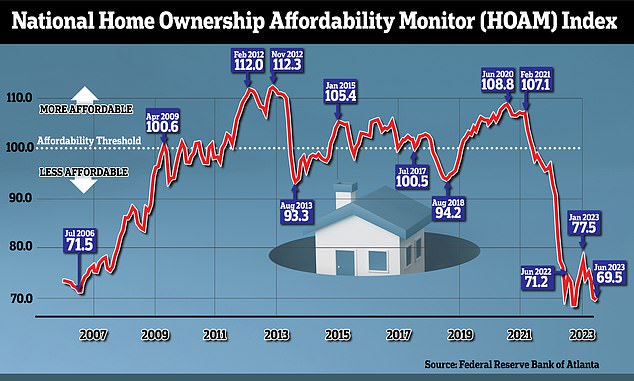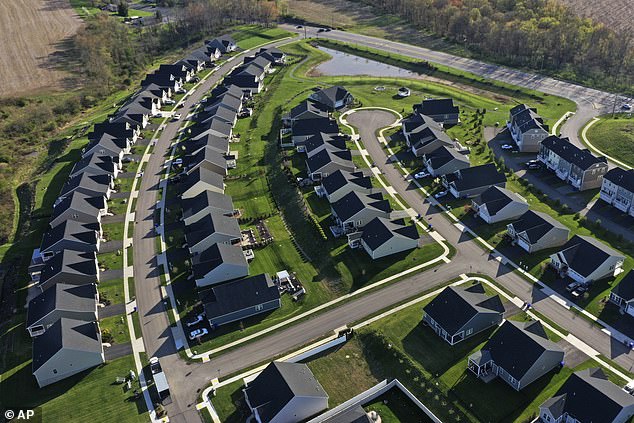Blame the Boomers! Aging population is keeping house prices high, says Wall Street economist
The aging U.S. population is keeping housing prices high, a Wall Street economist warned in a research note titled “Blame the Boomers.”
Homebuyers are currently facing a perfect storm of high mortgage rates and high home prices, meaning real estate is less affordable now than it was during the red-hot housing bubble of 2006.
But Barclays economist Jonathan Millar said the problem is being exacerbated by the number of baby boomers – people aged 57 to 75 – who are forming new households, either due to retirement, divorce or the death of a spouse. Millar added that this puts pressure on the already limited housing supply, keeping prices high.
The idea of “household formations” underlies much of the U.S. real estate landscape and often drives demand.
The term refers to the units of people living in a house that they rent or own together. For example, most children grow up in a ‘formation’ that includes their family, until they leave home to rent from a ‘formation’ of peers.
Barclays economist Jonathan Millar said limited housing supply has been exacerbated by the number of baby boomers – people aged 57 to 75 – forming new households, either as a result of divorce or the death of their spouse.

Homebuyers are currently facing a perfect storm of high mortgage rates and high home prices, meaning real estate is less affordable now than it was during the red-hot housing bubble of 2006
But Millar explained that there is a wave of baby boomers building new homes even though they are not yet old enough to actually free up housing.
Those of retirement age – 65 or older – now represent 16.5 percent of the population, up from 13 percent in 2010.
He wrote: “The US housing sector is on the rise again, even as mortgage rates are at their highest levels in decades.
‘While much has been attributed to shortages of existing properties and mortgage lock-in effects, we believe the strong demand is a symptom of an aging population.’
He added that the assumption is that older owners do not bring about changes in family composition.
“While it is probably true that older people prefer smaller homes, it is not true that an older population needs less housing,” he wrote.
“We believe this upward pressure on household formation is driving demand for units, driving up both prices and construction.”
The real estate market has reached an impasse as most homebuyers locked in their mortgage rates when they were still between 2 and 3 percent.
However, interest rates have more than doubled since then, with the average deal on a 30-year mortgage hovering above 7 percent, according to data from government-backed lender Freddie Mac.
Borrowing has been driven up by the Federal Reserve’s aggressive campaign to raise interest rates to a 22-year high to curb rampant inflation.
It means a homeowner with a $400,000 home now has to pay a monthly mortgage payment of $2,559.
But if they had adjusted this in September 2021 – when rates were around 3 percent – their monthly payments would have been almost $1,000 cheaper at $1,602.

Rates haven’t risen since 2000, reaching 8 percent, according to data collected by Freddie Mac
This analysis assumes they made a 5 percent down payment and signed at the current 30-year average rate of 7.12 percent.
It has created a ‘lock-in’ effect with households refusing to move to avoid higher mortgages – limiting the country’s already limited supply of housing and keeping prices high.
A recent Freddie Mac survey found that 82 percent of real estate buyers felt “trapped” in their property. And one in seven homeowners who have no intention of selling their home cited the current low rate as the main reason for staying put.
The average sales price for existing homes rose 1.9 percent to $406,700 in July, compared to a year earlier, according to the National Association of Realtors.
Millar predicted that housing demand will likely continue to rise, and any rate cuts will only add fuel to the fire.
“With the overall housing shortage likely to dominate, we believe risks to our forecasts for both home prices and rents are tilted to the upside, especially as the Fed enters its austerity cycle in late 2024,” he wrote.
